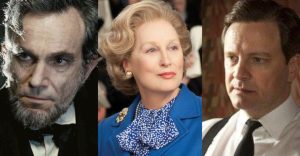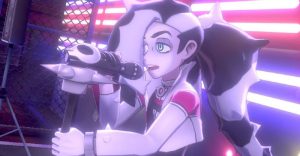Why Netflix’s Shadow & Bone Could Be The Next Game Of Thrones

Upcoming Netflix series Shadow and Bone could very well be the next Game of Thrones. As with HBO’s former flagship series, Shadow and Bone is also based on a series of novels, these from author Leigh Bardugo. Set in a fictional fantasy world that is analogous to ours, it tells the story of Alina Starkov, an orphan from Keramzin in the Kingdom of Ravka. After a shocking event, Alina discovers she has powers that could be the key to saving her kingdom as she has the potential to destroy the Shadow Fold, a swath of monster-filled darkness that cleaves Ravka in two. Power, however, breeds challenge, and Alina soon learns that numerous parties see her as nothing more than a pawn in their own game.
Since it’s gone off-air, no show has reached the water cooler show status of Game of Thrones. A few shows have come somewhat close – HBO’s other dramas Succession or Lovecraft Country come to mind, as do the Marvel series on Disney+, like WandaVision and The Falcon and the Winter Soldier. Still, nothing has yet even come close to enjoying the level of cultural impact and widespread popularity of Game of Thrones, even when its last two seasons somewhat went off the rails and badly botched the landing. And despite how TV and streaming is now awash in a sea of sci-fi, fantasy, and comic book genres, no fantasy series has yet achieved the level of success of Game of Thrones.
With Shadow and Bone, that could change. While it’s worth noting that with Netflix’s binge model of releasing a full season of a show all at once, Shadow and Bone will not enjoy the weekly buzz of an episodic series. But story- and genre-wise, the Netflix series very well could end up becoming the next Game of Thrones for audiences who have been looking to fill the grounded fantasy void left by the HBO series since it wrapped its series finale in May 2019. Once it releases in April, the new Netflix show could be an enormous hit – for a few reasons.
Rich Mythology & Worldbuilding

Game of Thrones, at least initially, strongly benefitted from the deep well of rich lore and mythology George R. R. Martin had laid out in his A Song of Ice and Fire books. It could be argued that once the TV adaptation outpaced the books that it went downhill, but the worldbuilding never suffered thanks to having had such a strong foundation. It’s partly what made the series so successful – audiences tuned in for the political machinations for the Iron Throne and the complex characters, but they wouldn’t have been nearly as fully realized if not set against the backdrop of such a detailed world.
Likewise, Leigh Bardugo’s “Grishaverse” – the name given to the fictional world that encompasses the Shadow & Bone trilogy and the Six of Crows/Crooked Kingdom duology – is also steeped in complex mythology and a clearly defined magic system. As with Game of Thrones, there are groups of people, known as Grisha, who still practice magic, which is known as the “Small Science.” Likewise, there are lands where magic has all but died out or is shunned, such as Fjerda, and kingdoms where it is still embraced and practiced, such as Ravka.
Also similar to Game of Thrones, Shadow and Bone is a fantasy counterpart culture; that is, it’s a fictional world the cultures and kingdoms of which are based on and inspired by the real world. In George R. R. Martin’s fictional universe, for example, Westeros was the equivalent of the United Kingdom, Braavos was a fantasy Venice, and the Wall was equitable to Hadrian’s Wall and the fierce, pagan Celts that roamed North of it. Bardugo’s world is similar. Ravka is analogous to Tsarist Russia of the early 1800s, the city of Ketterdam is a modified Amsterdam, and Fjerda represents our Nordic countries, among other comparisons. Building an entirely fictional world on a familiar, real-world foundation helps to ground the series and make it feel more real. As with Game of Thrones, Shadow and Bone‘s universe is vastly different from the real world but not so strange and alien that it’s difficult to immerse oneself in the fabric of the universe.
Deep Political Intrigue & Warring Kingdoms

As noted above, the Grishaverse has distinct kingdoms and countries, each with their own political and military agendas. When the audience is introduced to Ravka, it’s dropped into the middle of a kingdom that is not only grappling with imports and supplies slowly being choked off thanks to the Shadow Fold, but also that is at war with bordering kingdoms Shu Han and Fjerda. What’s more, the destitution of the land and the ravages caused by the Fold being largely ignored by the weak Ravkan king, Alexander III, means a civil war is also quietly fomenting in the shadows. All of that makes for a series that is ripe for personal stories set in the larger context of international conflict. Similar to how Game of Thrones saw multiple contenders from various kingdoms and houses vying for the Iron Throne, and warring for other reasons, the world of Shadow and Bone is in the midst of great upheaval.
Along with the greater international conflicts, however, are the personal machinations and schemes brewing behind closed doors. Alina is the queen on the world’s chessboard, and various countries and interested parties have their own reasons for wanting her on their side – or eliminated completely. Not everyone wants the Shadow Fold to be destroyed, including outside kingdoms looking to capitalize on Ravka’s vulnerability, and the smugglers who have set up profitable black market enterprises built around the Fold. Everyone has their secrets, even the protagonists of the story, antiheroes abound, and not everyone is who they appear on the surface. Everyone is playing their own game, and the complexity of the characters makes for far more interesting portrayals than straightforward heroes and villains.
Grounded But Beautiful Visuals – Both Practical & CGI

One of the reasons Game of Thrones was a fantasy series that really connected with audiences was because HBO spared no expense in building the world through the visuals. The tricky part of the fantasy genre is that, at least in TV series, the budget for CGI is usually smaller than for a feature film and the special effects suffer by comparison, often appearing cheap and shoddy. Likewise, a number of fantasy movies have failed for multiple reasons, but among them is the fact that the magic and the monsters all look the same, generic effects that could be copy-pasted onto any fantasy movie. Game of Thrones made a point to not skimp on the visual effects; when Dracarys burned through an army, it felt real and immediate – even the zombie ice dragon Viserion of Game of Thrones felt real. It helped that the VFX was married with the series shooting on location, which grounded the world and helped smooth over the few rough edges the CGI had. It also had the simultaneous effect of helping to anchor the more magical and fantastical elements in a believable world that audiences could connect with.
Shadow and Bone also wisely adopts this approach to its visuals, utilizing extremely simple but striking visual effects to portray the effects of magic. In the world of the Grishaverse, magic is science, the act of manipulating matter at its most basic form. As such, it visually manifests as rooted in the natural elements of the world and the viscera of the body. The magic of the Grisha is not the pretty, glittering fantasy sparkles and swirls of Harry Potter; it’s raw and often vicious, from a Heartrender magically ripping a man’s beating heart straight out of his chest to two Inferni tossing fireballs back and forth to Ben Barnes’ General Kirigan, a.k.a. the Darkling gathering shadows and shaping them into a blade. In other words, it’s about as close to what one might imagine magic would look like in reality. Between the adherence to realism in the special effects and it being shot on location as opposed to a soundstage, Shadow and Bone has a tangible, real-world feel despite the stunningly intricate costumes, fantastical creatures, and the use of magic.
Of course, there are vast differences between Shadow and Bone and Game of Thrones. Shadow and Bone, despite its surprisingly brutal moments, is not nearly as R-rated and Game of Thrones could be at times. Also, despite a number of the characters being old souls who have seen far too much, it has a slightly younger, YA bent simply due to the majority of the main characters being teenagers and played by actors in their 20s. And while there are a number of moving parts and intertwining storylines – like Game of Thrones, it’s not a series that looks to spoon-feed the audience or hold its hand – Shadow and Bone‘s clear protagonist is Alina Starkov, just as in the books, while Game of Thrones arguably had a handful of characters that could reasonably have been considered the main protagonist at various points in the series. Still, for those looking to scratch their gritty, complex fantasy itch after Game of Thrones, Netflix’s Shadow and Bone just might do the trick when it’s released on April 23.
About The Author
















